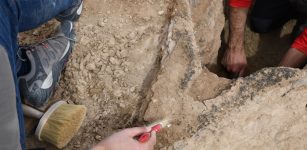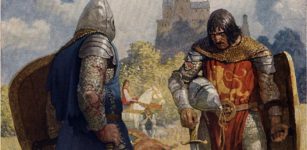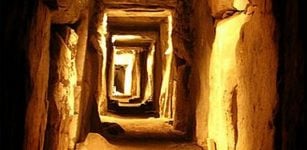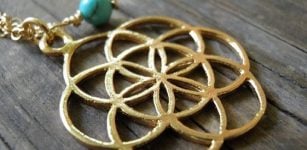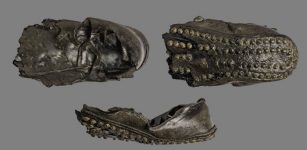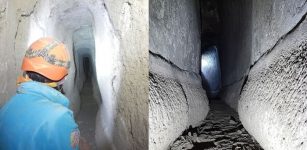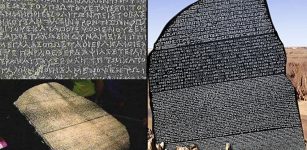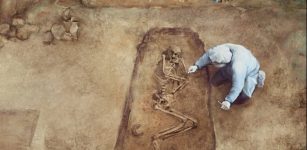Malagana Remarkable Sophisticated Goldwork: Legacy Of Colombian Pre-Hispanic Culture
MessageToEagle.com – Archaeological excavations and interviews with professional grave diggers – “guaqueros” are the main source of what is known about the Malagana Treasure.
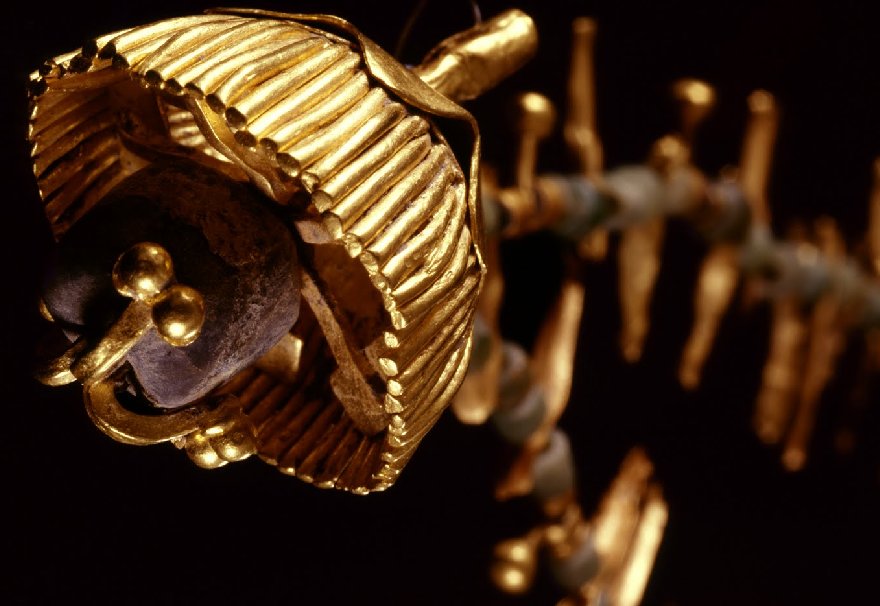
The Malagana Treasure is a legacy of an old culture, which most probably flourished between 180 BC and 70 AD, based on radiocarbon-dating of relics, which archaeologists managed to recover from the almost completely looted site.
It is not known how long Malagana culture lasted or what language these people shared.
From the archaeological site of Malagana disappeared about 4 tons (!) of pre-Columbian artifacts, illegally removed from the burial mounds.

The site was accidentally discovered in 1992 in a sugar-cane field at Hacienda Malagana, which is situated on the flatlands of the fertile Cauca river valley, near the city of Palmira in western Colombia.
Countless artifacts were removed by the treasure hunters. The weight of the gold objects that were taken from the site has been estimated at approximately between 180 kilograms (396 pounds) and 140 kilograms (308 pounds). Finally, diverse looters left the site and archaeologists could begin their work. The four important occupation periods have been identified: “Proto-Llama” (earliest period), “Llama,” “Malagana,” and “Sonsoid”.
One of the most attractive pieces of Colombian pre-Hispanic goldwork is a necklace (image above). The perfection of the representation of the flower, gives evidence to amazing the skills and technical inventiveness of the ancient craftsmen and makes this pendant a unique and exceptional piece.
At the cemetery site (mostly destroyed) archaeologists finally managed to reconstruct one of the tombs, described as follows:
The tomb consisted of a rectangular shaft about 3 m deep filled with gravel and river sand containing specks of alluvial gold…. A conical object of carved stone lay somewhere in the burial zone.
The body was stretched out on its back on the floor of the tomb, and the face was covered by three large gold leaf masks, one on top of the other. In the neck area were tubular gold beads and little gold birds, together with necklaces of colored stone beads, carved emeralds and red Spondylus shells, and enough tiny stone beads to form a string about 50 m long.
Gold beads were found in the neck area and in a single row on the chest. A sheet-gold mask concealed the feet of the corpse… A set of bone tubes (or cylindrical beads) found just below the waist may have been attached to a loincloth or kilt like those represented on miniature gold figurines, and the legs of the skeleton were separated by a line of rock crystal beads. In a niche in the wall above the head of the corpse were two Ilama-style pots: one a bowl with four feet and the other an alcarraza (a vessel with two spouts joined by a bridge handle) in the form of a recumbent woman. A layer of between fifty and one hundred stone slabs of various sizes covered and protected the entire funerary deposit. (Bray 2000).9
The Malagana culture had a hierarchical society and its artisanship is considered the most refined of southwestern Colombia’s pre-Hispanic cultures.
The pectoral plates and large masks of gold were for the exclusive use of the chieftains and great males and worn for special ceremonies, while ordinary people wore small, pectoral plates of copper.
The Malagana chieftains used adornments closely related to nature, and their gold masks and other artifacts show clearly their spiritual knowledge as shamans.

Their tombs contained the highest-quality gold, of 24 karats and more, forged into exquisite sun-shaped chest plates with fanged feline faces, necklaces of crustacean forms and finely etched face plates bearing serpents, bats and jaguars.
See also:
The Mysterious Lost City Of The Tairona Hidden In The Jungles Of Colombia
Paititi: Legendary Lost Inca City Of Gold
Centuries-Old Hunt For Vanished Treasures
These people believed that the sun was the center and origin of life and the shamans depended on it as their source of wisdom and power.
The Malagana people were farmers. Unearthed diverse vessels revealed that Malagana men used nature’s indigenous drug, the coca plant, chewing toasted coca leaves mixed with lime ground from snail shells. Amazingly, they left exquisite and sophisticated gold earrings shaped like passion flowers, butterfly chrysalises and swirling mollusk shells.
The gold items and pottery show a great variety of anthropomorphic figures, and even everyday ceramics displays beautifully formed human figures in curious poses.
Copyright © MessageToEagle.com All rights reserved. This material may not be published, broadcast, rewritten or redistributed in whole or part without the express written permission of MessageToEagle.com



